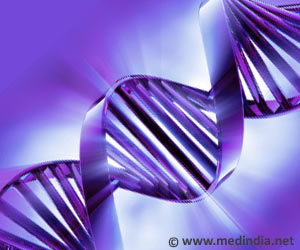Highlights
- A gene called PHB2 (Prohibitin 2) is expressed in the inner membrane of the mitochondria, find scientists from the UT Southwestern Medical Centre.
- During degradation of the mitochondria, the outer membrane is destroyed and PHB2 is present on the surface
- PHB2 binds to the LC3 receptor present on the surface of autophagosome and leads it to a lysozyme for natural degradation.
- Improper degradation of mitochondria results in the release of reactive oxygen species that are harmful and lead to cancer, aging and neurodegenerative disease.
- PHB2 could be a potential target for drug therapy in the treatment of cancer or to reverse certain signs of aging.
It is very important for cellular health to remove mitochondria using autophagy (self-destructive mechanism of the cell). For long, research teams that work on mitochondria have always focused on certain protein ‘tags’ that are present on the surface of the mitochondria, especially the protein ‘Parkin’ that attaches to these tags. These tags were used to explain the degradation of the organelles by the cells called autophagosomes, which identify mitochondria that are sick and signals degradation.
However, the research team from UT Southwestern University has found that a receptor that is expressed in the inner membrane of the mitochondria could play a key role in its degradation.
Prohibitin 2
The research team identified a protein called prohibitin 2 (PHB2) present in the inner membrane of the mitochondria, this protein is expressed when the degradation of the mitochondria results in the outer membrane being ruptured. The protein LC3 that is present on the surface of the autophagosomes exterior gets attracted to the prohibitin 2 expressed by the degrading mitochondria.The protein LC3 binds to PHB2 and guides it towards the lysozyme, which is an organelle with enzymes to digest cellular waste. Dr. Levine adds that the discovery that the protein PHB2 is essential for mitochondrial degradation is new and would aid in understanding mitochondria and their degradation process better.
Elimination of Paternal Mitochondria
PHB2 has also been found to be involved in the degradation of paternal mitochondria, because only the maternal mitochondria are retained in the developing embryo. Mitophagy helps in eliminating the paternal mitochondria, and it was first identified in earthworms. Recent studies, however, have shown that mitophagy exists in humans too.Prohibitin 2 in Hepatocellular Cancer
A previous study on prohibitin 2 titled ‘Prohibitin-2 promotes hepatocellular carcinoma malignancy progression in hypoxia based on a label-free quantitative proteomics strategy’ by Cheng J et al showed that prohibitin 2 was involved in hepatocellular carcinoma. In hepatocellular carcinoma, the rapid growth and development of the tumor cells lead to a condition called tumor hypoxia, a well-known and common feature.This tumor hypoxia leads to a change in the biological properties of tumor cells. These changes lead to an improvement in cancer survival even under conditions of stress which make these cells resistant to apoptosis (programmed cell death) and angiogenesis (development of new blood vessels).
The mechanism of action of these malignant hepatocellular cancer cells was not known earlier. The scientists in the study found that there was a significant increase in prohibitin 2 in the hepatocellular cancer cells. In the study, the research team of Cheng et al showed that the treatment of these hepatoma cancer cells, using small interfering RNAs which were against PHB2, lead to the suppression of the growth of these cancer cells. Further suppression of PHB2 resulted in the dramatic repression of the hepatocellular cancer cells to survive in the hypoxic environment.
PHB2 in Mitochondria-related Diseases
The current study that focuses on the mechanism of mitochondrial degradation provides insights into many genetic disorders that may be caused by mitochondria. Though only maternal mitochondria should be present in the progeny, sometimes, the paternal mitochondria may also be passed onto the progeny. This leads to a lot of health problems, targeting the PHB2 will aid in treatment for such genetic disorders. The Parkin protein has been studied extensively in autophagy but the research team from UT Southwestern University has shown that Parkin protein cannot function without PHB2.PHB2 could soon be used as a target for drug therapy against many different cancers as well as in genetic disorders.
References:
- Prohibitin-2 promotes hepatocellular carcinoma malignancy progression in hypoxia based on a label-free quantitative proteomics strategy. - (https://www.ncbi.nlm.nih.gov/pubmed/23661548)















